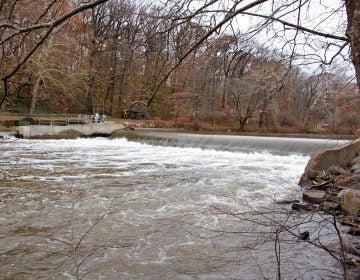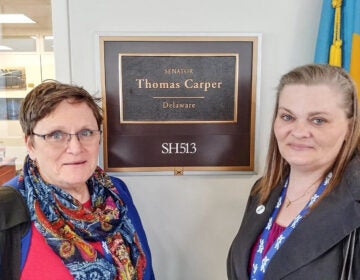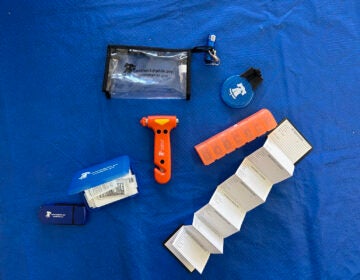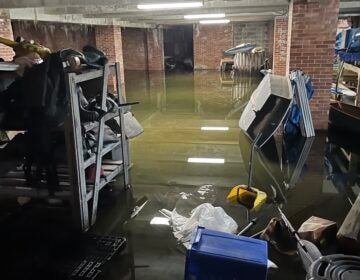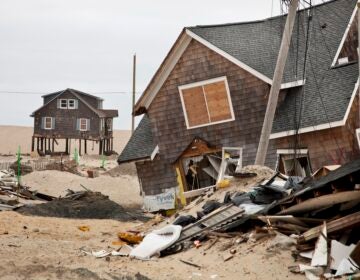Human waste has been detected in Southern Delaware waterways. Home septic systems may be to blame
Homeowners are not required to inspect their septic systems until they sell their home, meaning deteriorating systems could go unnoticed.
Listen 1:14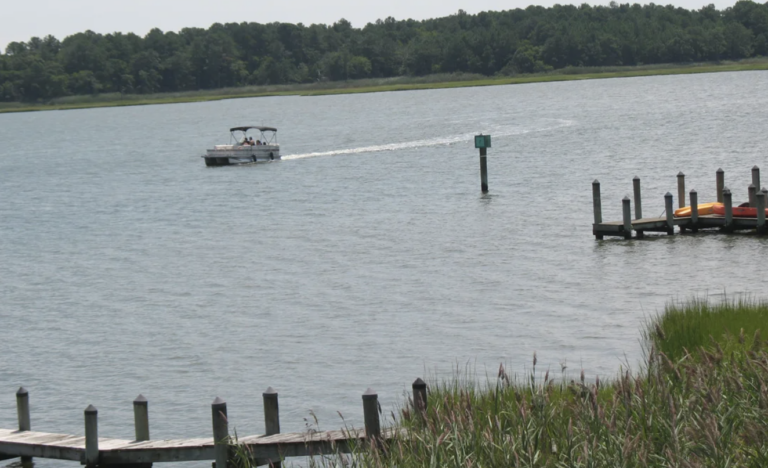
A boat passes Beach Cove in Delaware's Inland Bays near Bethany Beach. (John Mussoni/WHYY)
This story is part of the WHYY News Climate Desk, bringing you news and solutions for our changing region.
From the Poconos to the Jersey Shore to the mouth of the Delaware Bay, what do you want to know about climate change? What would you like us to cover? Get in touch.
Researchers have detected human waste in Southern Delaware’s inland watersheds and poorly maintained septic systems may be to blame, according to a new study from the University of Delaware published this month in “Applied and Environmental Microbiology.”
In rural parts of Delaware, many residents are not connected to public sewer systems. Instead, they rely on private septic systems on their properties.
“Something people can think about is making sure that they keep their septic clean and pumped, making sure that it’s up to code, and just making sure that they maintain [the system’s] potential impact on the environment,” said researcher Jennifer Biddle, a professor at the University of Delaware’s School of Marine Science and Policy.
More than 90% of Delaware’s waterways are polluted and do not meet water-quality standards for recreation, fishing or drinking, according to the state’s Department of Natural Resources and Environmental Control.
The so-called “impaired” waters are most commonly contaminated with pathogens and nutrients, according to DNREC. For decades, the state has established pollution limits in an effort to improve these waterways.
While chemical contamination, such as nitrogen and phosphorus from fertilizer runoff, has decreased over the years, significant amounts of microbes, including gut bacteria, are detected in Delaware’s waterways. It’s not uncommon for the state to advise residents against swimming in certain waterways when bacteria levels are high.
Biddle and her research team used gene sequencing methods and determined the microbes are from human waste, both treated and untreated, rather than from animals.
The contamination reflected the number of private septic systems in Southern Delaware, Biddle said. The bacteria pollution was also detected at higher levels in 2020, when more people worked from home during the height of the COVID-19 pandemic.
The polluted waterways Biddle studied do not supply drinking water. Still, she said more research is needed to determine whether aquatic life, or recreational activities such as fishing, are impacted.
Homeowners in Delaware are not required to inspect their septic systems until they sell their homes, meaning deteriorating systems could go unnoticed.
Biddle said she hopes the study will encourage municipalities to connect more residents to public sewer systems, and in the meantime, urge residents to ensure their septic systems are functioning properly.</a
“I’m hoping the response to our findings is that the different municipal areas, and potentially state areas, could think about ways to encourage people to maintain their septic infrastructure well, and also could potentially encourage the increase of sewer in the area in terms of letting people connect to areas where that waste is well-treated,” she said.

Get daily updates from WHYY News!
WHYY is your source for fact-based, in-depth journalism and information. As a nonprofit organization, we rely on financial support from readers like you. Please give today.



